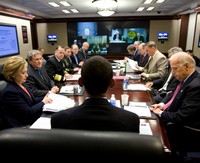Since the fall of the Soviet Union, the hostilities that historically divided the Cold War’s political and military opponents have cooled, but a heightened intensity in espionage has become evident as well. New antagonists have surfaced as old enemies seemingly became allies; nonstate actors occasionally have become as dangerous and influential as nations with standing armies; and the computer and satellite have replaced lapel cameras and microfilm stashed in shoe heels as preferred methods of espionage. Predictably, the playing field of global espionage has become more sophisticated as well.
Cyberspace and outer space have become espionage battlegrounds where fortunes are stolen, technologies are pirated and attacks are launched against state adversaries. Satellite listening stations that capture computer keystrokes supplant mere bugging operations, and the operational environment is measured in the space -- and the corporations -- that a state controls. The terms “friend” and “ally” have begun to lose significant meaning in the new espionage, and it appears that everyone is stealing everything from everyone else, whether technology, software or the capacity to conduct warfare.
Not long ago, the superpowers that squared off with nuclear missiles generated their own unique variety of espionage. But once the U.S. and the Soviet Union no longer threatened the globe with nuclear holocaust, some even questioned the need to continue spying on one another. In the early 1990s, an official with the U.S. Central Intelligence Agency (CIA) optimistically speculated that it was no longer necessary to spy on the Russians because they had nothing of value left from which the West might benefit. The Cold War focus on counterespionage waned as tensions eased. Some say the West dropped its guard.

